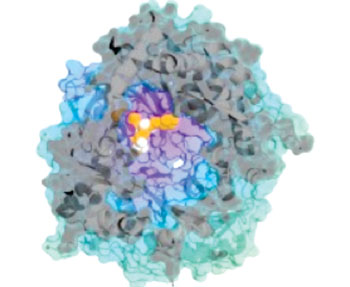Blocking Insulin-degrading Enzyme Reverses Diabetes Symptoms in Mouse Model
By LabMedica International staff writers
Posted on 16 Jun 2014
Determination of the structure of insulin-degrading enzyme (IDE) by X-ray crystallography paved the way for its successful inhibition and the easing of symptoms in a mouse model of type II diabetes.Posted on 16 Jun 2014
The IDE gene encodes a zinc metallopeptidase that degrades intracellular insulin, and thereby terminates its activity, as well as participating in intercellular peptide signaling by degrading diverse peptides such as glucagon, amylin, bradykinin, and kallidin. The preferential affinity of this enzyme for insulin results in insulin-mediated inhibition of the degradation of other peptides such as beta-amyloid. Deficiencies in this protein's function are associated with Alzheimer's disease and type II diabetes mellitus but mutations in this gene have not been shown to be causative for these diseases. This protein localizes primarily to the cytoplasm but in some cell types localizes to the extracellular space, cell membrane, peroxisome, and mitochondrion.

Image: Molecular model shows how the inhibitor binds to Insulin Degrading Enzyme (IDE). The inhibitor is depicted in orange and white spheres. IDE is depicted as the blue and green surface, and the gray ribbons (Photo courtesy of Dr. Markus Seeliger, Stony Brook University).
Investigators at Stony Brook University (NY, USA) and colleagues at Harvard University (Cambridge, MA, USA) and Brookhaven National Laboratory (Upton, NY, USA) reported in the May 21, 2014, online edition of the journal Nature that they had discovered a physiologically active IDE inhibitor from a DNA-templated macrocycle library. An X-ray structure of the macrocycle bound to IDE revealed that it engaged a binding pocket away from the catalytic site, which explained its remarkable selectivity.
Treatment of lean and obese mice with this inhibitor showed that IDE regulated the abundance and signaling of glucagon and amylin, in addition to that of insulin. Under physiological conditions that increased insulin and amylin levels, such as oral glucose administration, acute IDE inhibition led to substantially improved glucose tolerance and slower gastric emptying.
"A strategy to protect the remaining amounts of insulin produced by diabetics in response to blood sugar levels is an attractive treatment alternative, particularly in the early stages of type II diabetes,” said contributing author Dr. Markus Seeliger, assistant professor of pharmacological sciences at Stony Brook University. “The research results give proof of concept that targeting this protein is extremely promising. The inhibitor we discovered successfully relieved the symptoms of type II diabetes in obese mice and not only elevated their insulin levels but promoted healthy insulin signaling within the blood.”
Related Links:
Stony Brook University
Harvard University
Brookhaven National Laboratory













